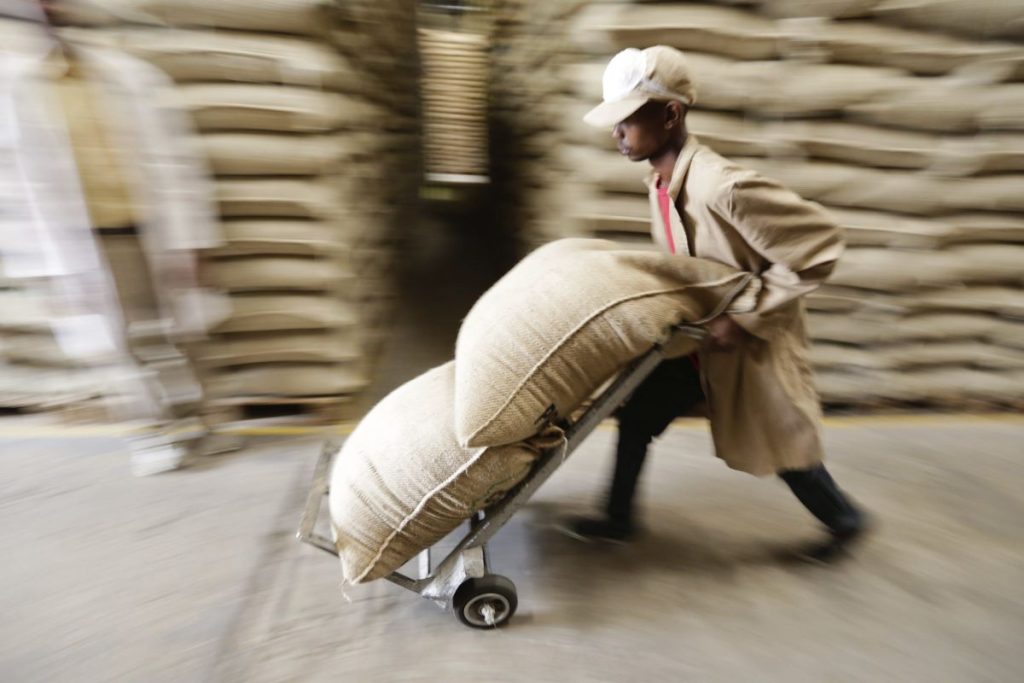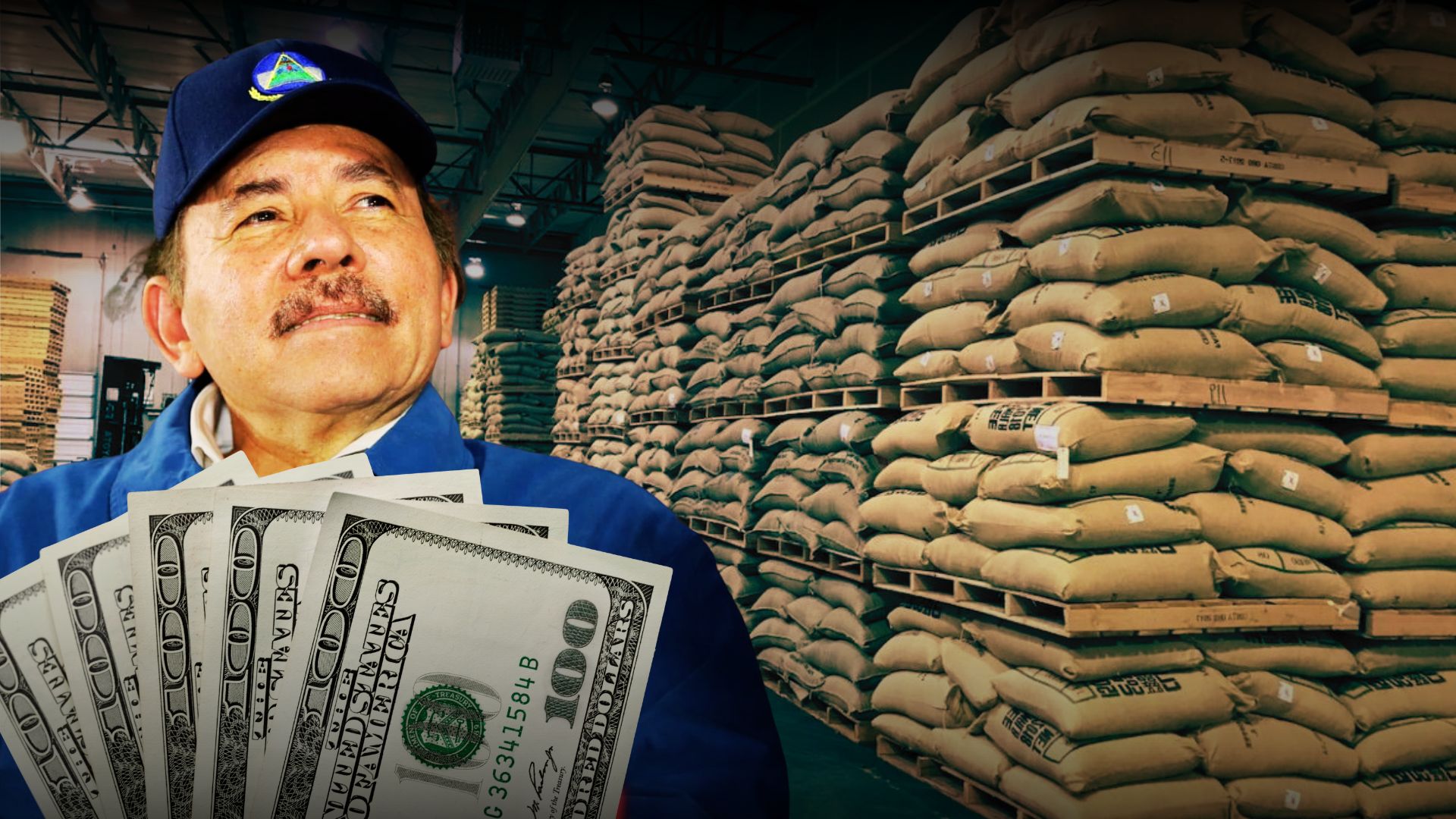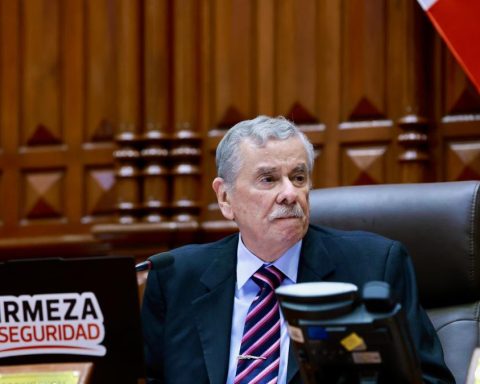Mercilessly! This is how the Ortega and Murillo government applied to Nicaraguan coffee growers the “contribution” they make to the Fund for the Transformation and Development of Coffee Growing (FTDC), which they raised from $3 in 2024 to $4 for each quintal exported in 2025, this for the good international prices that coffee has reached.
Although the government will obtain benefits, this will not be the case for coffee growers who are already suffering losses due to the drop in prices in previous years and which represent a loss of over half a million quintals in exports.
Until 2018, the private company managed the coffee sector through the National Commission for the Transformation and Development of Coffee Growing (Conatradec), which was eliminated by the government after political tensions between both sectors. The regime then created the FTDC and applied by law a “contribution” to coffee growers, which is managed by state officials.
Until 2024, the government of Ortega and Murillo has taken 60.8 million dollars from coffee growers through the “disguised tax” applied only to Arabica coffee, since the figures on robusto coffee are unknown; However, its exports are lower. The coffee growers also claim that they do not know what is done with the funds they contribute to the regime.
Contribution will rise due to good international prices, says the regime
For the 2023-2024 production (which begins in October 2023 and ends in September 2024), prices per quintal of Arabica coffee on the New York Stock Exchange reached $204.31 and robusta coffee reached $160.64 per quintal on the London Stock Exchange. This was reported by the government through the Ministry of Industry and Commerce in a ministerial agreement published last Wednesday.
The regime took these prices as a reference and argues that 204.31 for the Arabic quintal and 160.64 dollars for the Robusta quintal exceed the price set by Law 856, Law for the Transformation and Development of Coffee Growing, which is 185 dollars for the Arabica and 115 for the quintal of Robusta.
Therefore, coffee growers are obliged to increase the contribution to the FTDC from 3 dollars to 4 dollars per quintal of arabica and 2.5 dollars per quintal of robusta that are exported during the 2024-2025 harvest. The coffee harvest year is established from October 1st to September 30th; However, the contribution is collected in a calendar year, that is, from January to December.
Although Mific takes the international price of coffee in 2024 as a reference, and the increase is applied according to this price, these could decrease in 2025; However, the contribution will not decrease, which would affect Nicaraguan coffee producers, who will not be able to take advantage of this international increase due to losses in previous years from which they have not been able to recover.
Related news: Northern coffee growers facing a new cycle with the same evils: Lack of labor and no financing
This is the second time that Nicaraguan coffee growers have suffered an increase in the contribution, the other year was in 2023. Since it was created in 2014, the value of one dollar per quintal was imposed, which generated an income to Conatradec of 2.47 millions of dollars; and was increased to two dollars from 2015 to 2018, generating an annual income of 6 million dollars.
After 2018 and the government taking control of this contribution or “disguised tax” as some producers call it, the Sandinista regime was forced to reduce the contribution rate due to the collapse in the price of coffee internationally, collecting annually a little more than 3 million between 2019 and 2021.
In the following years there was a slight improvement in prices for which the contribution grew again, in 2023 coffee growers paid the highest figure up to that time, 4 dollars per quintal of Arabica coffee and collected more than 12 dollars for the FTDC. million dollars. In 2024, the rate was set at 3 dollars per quintal and although prices fell at the beginning of the year, producers had to pay with the established rate, for which the government received 6.33 million dollars.

However, all of these incomes are not supervised by the coffee growers, and even less so by the private (aggregated) company dissolved by the Ortega-Murillo regime. In addition, the real price that Nicaraguan coffee receives internationally is also unknown since it is the Single Window for Foreign Trade (Vucen) that is in charge of publishing this data, in addition to the volume, variety and average of exports.
Vucen has not published this data since December 2023 and, on the contrary, eliminated the publication of previous exports.
Closure of Cisa Exportadora leaves million-dollar losses
The closure due to financial problems of the company CISA Exportadora, the main coffee marketer in Nicaragua, became another blow for the country’s coffee producers, since this company collected, processed and exported half of the harvest produced in Nicaragua.
On average, there were about 69 million kilos of coffee exported by CISA, and in addition the 2023-2024 contracts were suspended so producers faced uncertainty. These suspensions represent a 19% drop in coffee exports and a 22% reduction in income compared to the previous cycle.
Related news:Nicaraguan coffee growers plan to produce more than three million quintals
These data are not very clear because Vucen, which is in charge of publishing them, has not revealed them, and only the net export data published by the Central Bank of Nicaragua is available.
Between October 2023 and July of this year, the coffee sector exported its lowest production, 2.33 million quintals, which represented a loss of more than half a million quintals in relation to those exported in that same period in previous years, despite For this reason, the contribution rate to the regime must remain stable.
Coffee growing is the second export item behind gold, and there are about 38,000 producers who employ about 600,000 people in permanent and temporary jobs.
















